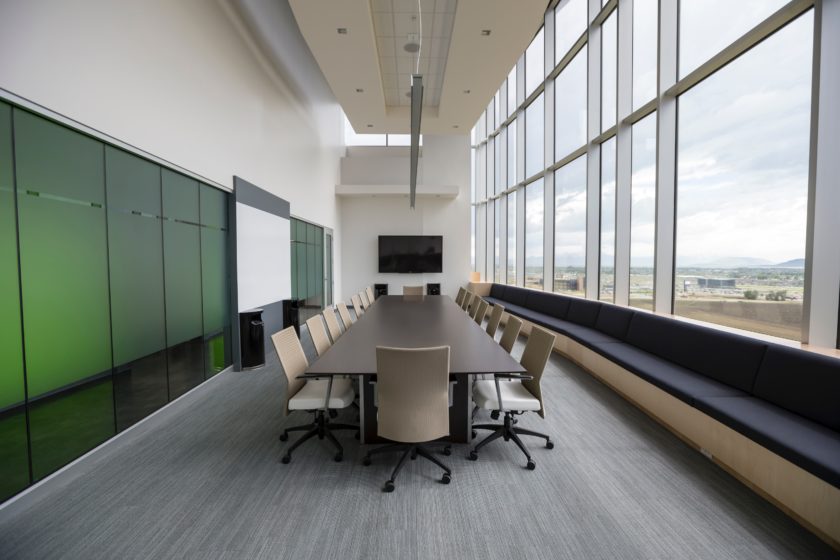What does the property investment market look like if, as seems likely, home working reduces the need for office space? Craig Wright, head of European research, Real Estate Investments looks at the possible repercussions
Over a year since we were ordered to fire up the broadband and work from home where possible, a return to the commute, the overpriced latte, and the 9-to-5 in an open-plan office in an identikit building is a harder sell.
Those who worked from home during the pandemic generally enjoyed the experience and now want to blend office and home-based working. Focused Zoom meetings, dog walks, collecting children from school, working uninterrupted out of office hours – are among the factors that have allowed employees to find better work/life balance.
It’s clear that a reassessment of office working arrangements is underway that will affect workers, employers, office property owners and investors.
The UK, because of its services-based economy, has a workforce more able to work from home than most. Here, 26% of workers reported being able to work from home 3-5 days per week, a further 22% could manage 1-2 days. This leaves 52% not able to work remotely, whereas in the US, 61% of the workforce reported not being able to work from home and in China, it’s 79%.
The pandemic proved that many traditionally office-based companies can thrive on remote working. But if the traditional pattern of office working is not going to continue, what does this mean for the traditional office?
Structural change is underway
Our research indicates that through a combination of the rise in remote working and more stringent occupier and regulatory requirements, as much as 15-20% of standing office space could become obsolete over the coming years. Major corporations are already adjusting for this with HSBC and Standard Chartered just two examples of large office users outlining plans to reduce their office footprint globally.
In central London, available office space has increased from 6% to 11% in the past 12 months, and certain types of property will be harder to let than others. Lower quality office buildings in less desirable locations will bear the brunt, especially offices that are not easy to commute to. Workers will question why they should sit in traffic or take a series of trains to reach an unglamorous space, far from cafes or gyms, when they could log in from their homes.
In most cases, a lick of paint will not save sub-standard offices from becoming obsolete. The positive outcome would be for dilapidated workspaces to be re-purposed into other residential or commercial uses, including affordable housing. If property owners think creatively, there may be many better solutions for second-rate office spaces.
Offices fit for the future
Post-pandemic, the offices that will command the highest price and greatest demand will be the ‘destination offices’, the type of grade-A, fit-for-the-future space that makes the commute on those two or three days of the week completely worthwhile. This will be a creatively designed space where workers and their clients will want to spend time; an office that is sustainable and energy-efficient and designed for collaboration, quiet time, training, idea generation, meetings and events.
It’s also going to be beautiful. The touches once only seen on Instagram, wooden desks, designer lamps and houseplants, will all make their way into the destination office. Cubicles and uniform grey chairs will be replaced with luxury sofas, sleep pods and colourful corners for brainstorming. Outdoor meeting space will be built in where possible and designers will take inspiration from the vertical gardens and vertical forest creations of buildings such as Bosco Verticale in Milan.
Our research has boiled down the most desirable features of the future office to: flexibility, amenity, connectivity, technology and sustainability – spaces that can meet all the needs of a company, in desirable locations with plenty of facilities, close to convenient transport, packed with high tech and also meeting sustainability and energy efficiency targets. Of all these qualities, flexibility, technology and sustainability are the most desirable qualities of all. Another buzzword now is ‘de-densification’. In the era of Covid-19, office workers want space between desks, wider corridors, and room to spread out. The competition to source talent will ensure this becomes a pre-requisite for the top firms.
For the office property providers who can give companies all of the above, rents and leases will come at a premium that should make the investment involved in creating these buildings worthwhile. There may also be grants and subsidies available for refurbishments that make buildings much more energy efficient – or even penalties for buildings that do not meet strict new efficiency measures. The fit-for-the-future destination office should attract the best tenants and the longest leases, so there should be exciting opportunities ahead for office investors who want to embrace the changes ahead and move quickly.



































